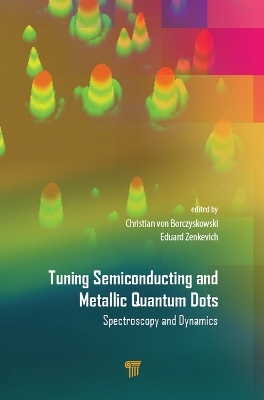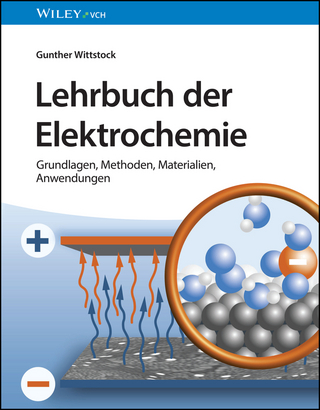
Tuning Semiconducting and Metallic Quantum Dots
Pan Stanford Publishing Pte Ltd (Verlag)
978-981-4745-24-6 (ISBN)
- Titel nicht im Sortiment
- Artikel merken
Christian von Borczyskowski graduated from Freie Universität, Berlin, Germany, in 1973, where he also received his PhD in 1977 and his habilitation degree in 1987. He was a postdoc at Leiden University, the Netherlands. Since 1993, he is a full professor at Technische Universität, Chemnitz, Germany, where he also served as dean of the science department (1994–1997), president of the university (1997–2000), dean of the Accumulation of Single Molecules to Nanostructures graduate college (2003–2007) and the Sensorics and Cognition school (2009–2013), and coordinator of nanoMA (center for nanostructured materials and analytics). He was a visiting professor at the University of Grenoble, France, and the Australian National University, Canberra, Australia. His focus was on optical spectroscopy and molecular physics, including microscopy of single molecules and quantum dots. Dr. von Borczyskowski is one of the pioneers of optical detection of single spins in condensed matter. During the past decade, he has focused on single quantum objects as dynamic probes in soft matter physics, in nanoaggregates, and at nanostructured organic/inorganic interfaces, as well as dynamic optical properties of nanocrystals. He has published more than 250 papers in refereed journals. Eduard Zenkevich graduated from Belarussian State University, Minsk, Belarus, in 1967. In 1973, he received his PhD and in 1990 his Doctor of Sciences degree (Dr. habil.) in physics and mathematics from the Institute of Physics, National Academy of Sciences, Belarus. From 1998 to 2007, he was a full professor of physics at the Institute of Molecular and Atomic Physics, National Academy of Sciences, Belarus, and since 2007, he is a full professor at the Department of Information Technologies and Robotics and scientific head of the Research Laboratory of Applied Physics and Informatics, Belarussian National Technical University, Belarus. The general focus of his research activities is on the study of structure/relaxation dynamics for various nanoscale self-assembled objects: multiporphyrin systems, pigment–protein complexes, and semiconductor quantum dot–functional organic ligand nanocomposites. Since 1993, Dr. Zenkevich is also a visiting professor and lecturer at the Institute of Physics, Technische Universität, Chemnitz, Germany. Since 2010, he is an accredited expert of the Russian Nanotechnologies Corporation RUSNANO. He acts as a referee for various scientific programs and journals and has published more than 200 papers in refereed journals.
Introduction to excitons in colloidal quantum dots and metal aggregates: Quantum size effects, spectra, and dynamics. Temperature dependence of exciton–phonon coupling. Principles of single quantum dot detection: Influence of surfaces and interfaces on excitons. Luminescence intermittency (blinking) and spectral diffusion. Relation between ensemble and single quantum dot properties. Surface-related quantum dot–dye nanoassembly formation. Foerster resonance energy transfer (FRET). Photoluminescence quenching and bleaching. Nanolithography and assembly of luminescent nanostructures. Applications of quantum dots.
| Erscheinungsdatum | 30.12.2016 |
|---|---|
| Zusatzinfo | 32 Illustrations, color; 129 Illustrations, black and white |
| Verlagsort | Singapore |
| Sprache | englisch |
| Maße | 152 x 229 mm |
| Gewicht | 834 g |
| Themenwelt | Naturwissenschaften ► Chemie ► Physikalische Chemie |
| Technik ► Elektrotechnik / Energietechnik | |
| Technik ► Maschinenbau | |
| ISBN-10 | 981-4745-24-3 / 9814745243 |
| ISBN-13 | 978-981-4745-24-6 / 9789814745246 |
| Zustand | Neuware |
| Haben Sie eine Frage zum Produkt? |
aus dem Bereich


